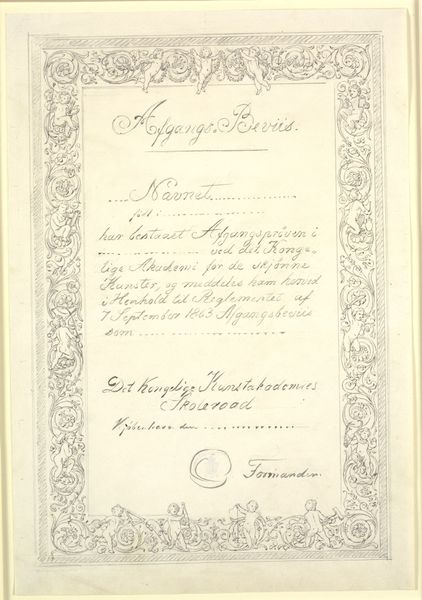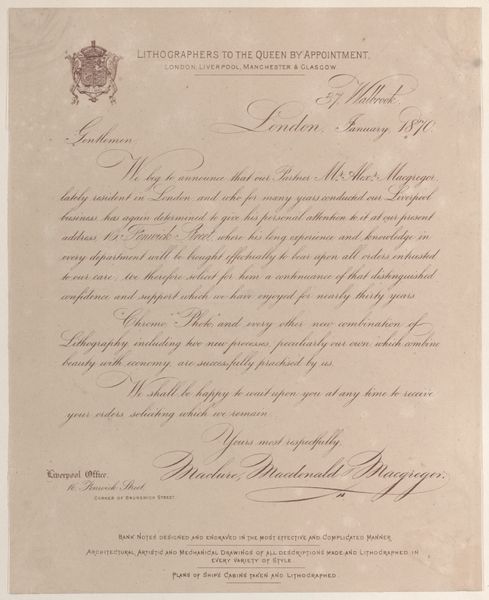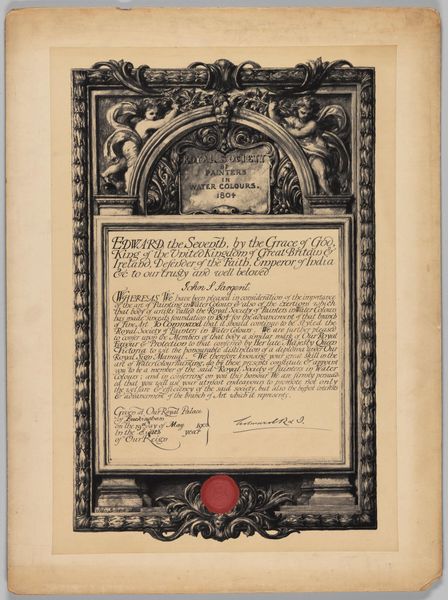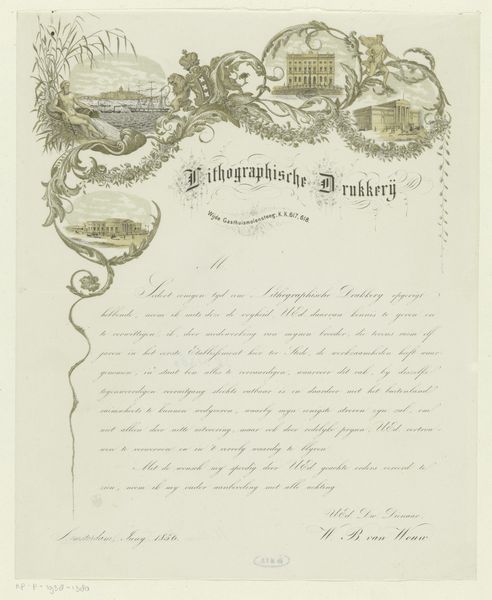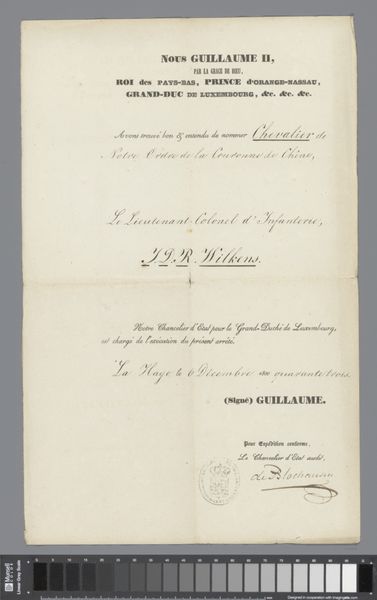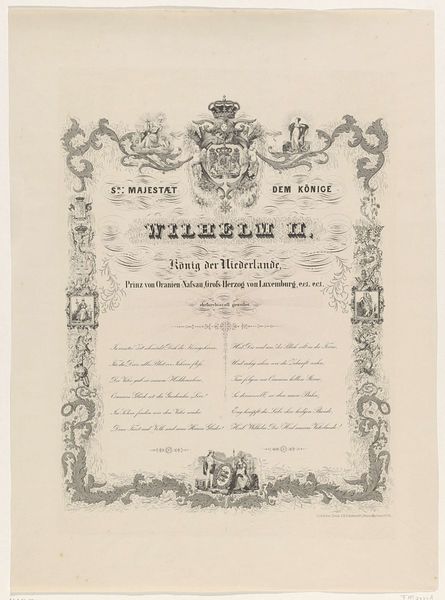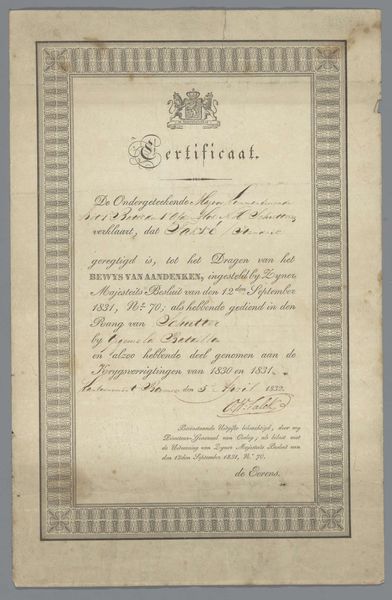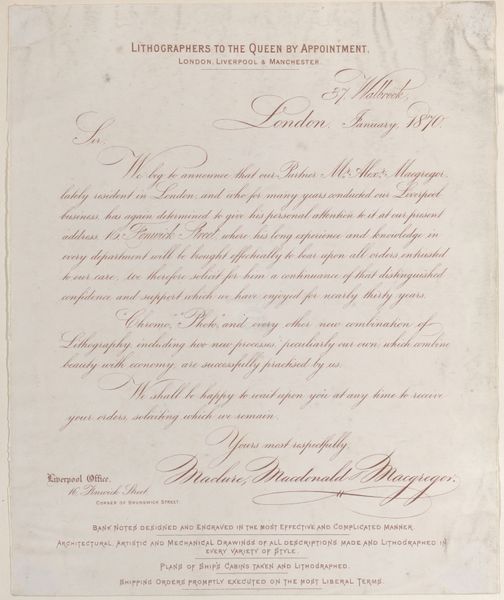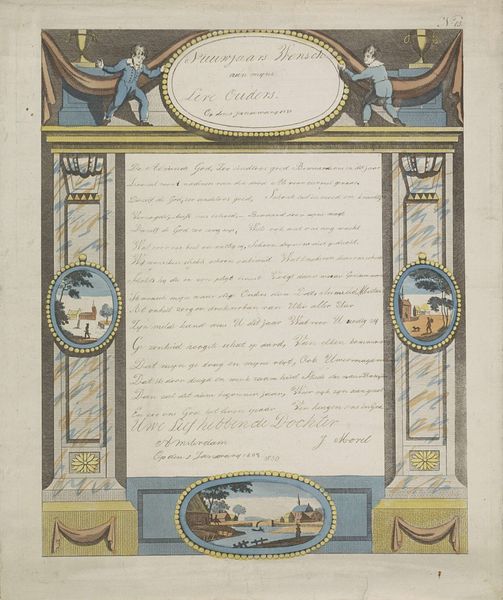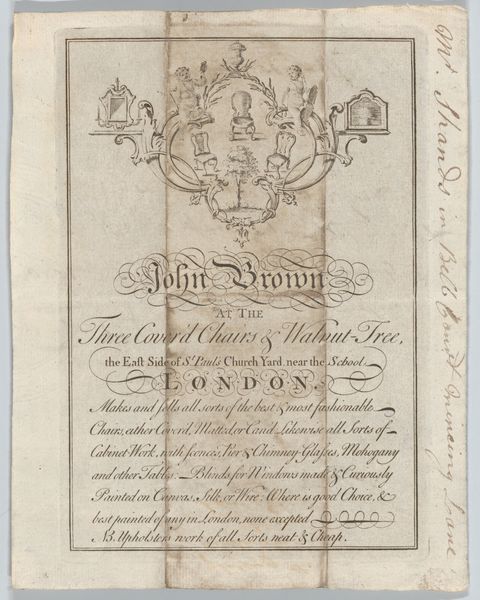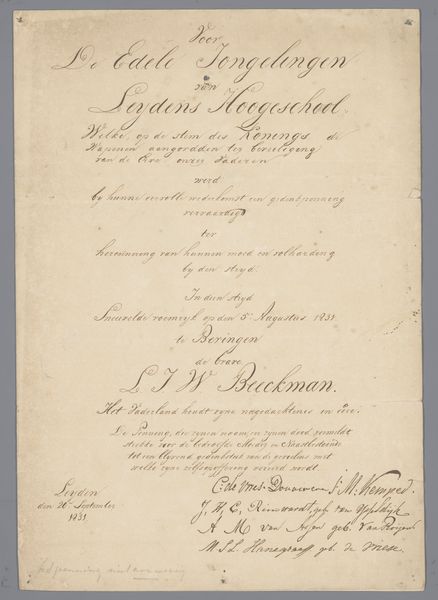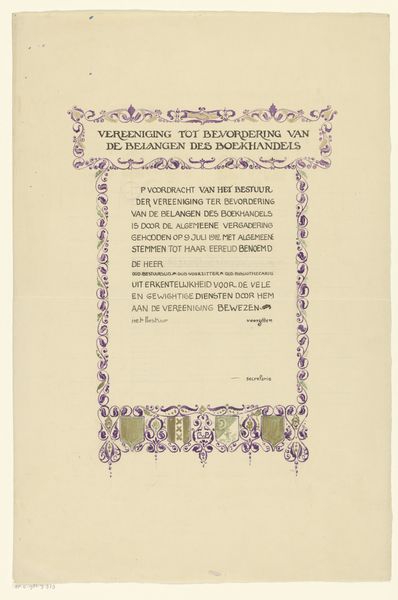
Aandeel van de Societé anonyme d'Horticulture et de Botanique de Gand Possibly 1835
0:00
0:00
graphic-art, print, paper, engraving
#
graphic-art
#
aged paper
#
light pencil work
# print
#
old engraving style
#
paper
#
personal sketchbook
#
ink drawing experimentation
#
geometric
#
pen-ink sketch
#
pen work
#
sketchbook drawing
#
storyboard and sketchbook work
#
decorative-art
#
sketchbook art
#
engraving
Dimensions: height 303 mm, width 244 mm
Copyright: Rijks Museum: Open Domain
Curator: I find myself quite drawn to the geometric symmetry evident in this print. The composition is rigidly organized around the textual body at its center, offset by delicate vegetal borders, emblems, and finials that decorate the composition's edges. Editor: This is indeed a remarkable specimen of its kind. This object, “Aandeel van de Société anonyme d'Horticulture et de Botanique de Gand,” likely dating from 1835, is a stock certificate issued by a horticultural and botanical society in Ghent. Curator: Yes, and I think the success of this work derives in part from its limited palette. The contrast of the dense black linework with the aged white paper makes this decorative surface read almost as a pure study in texture, especially if one disregards the literal signification of its text. Note how the various hatchmarks create local areas of high and low contrast in a way that directs our eyes through the document. Editor: It is a testament to the period's growing investment in scientific societies. Before this point, gardens were primarily the domain of the wealthy, but by this period we begin to see public support and access made possible through financial instruments like the very paper we are observing. It suggests an emerging middle class eager to invest in botanical progress. Curator: Look, specifically, at the borders that surround the central text! One observes how repeated figures function as pure pattern. While representational elements are clearly embedded within this border, their individual meanings as botanical figures become subservient to a purely ornamental and structural design. Editor: I am less taken with its aesthetics than what this tells us about the social and economic history of 19th-century Belgium. These aesthetic details, though charming, functioned to inspire investor confidence. This certificate broadcasts not only an enterprise but also a particular kind of financial trustworthiness in the power of scientific advancement. Curator: Well said. Still, from my perspective, its structural success can still be appreciated irrespective of that context. Editor: Context certainly adds another layer to our experience. Thank you for your insights. Curator: Likewise, your insights were particularly informative, adding valuable context.
Comments
No comments
Be the first to comment and join the conversation on the ultimate creative platform.
